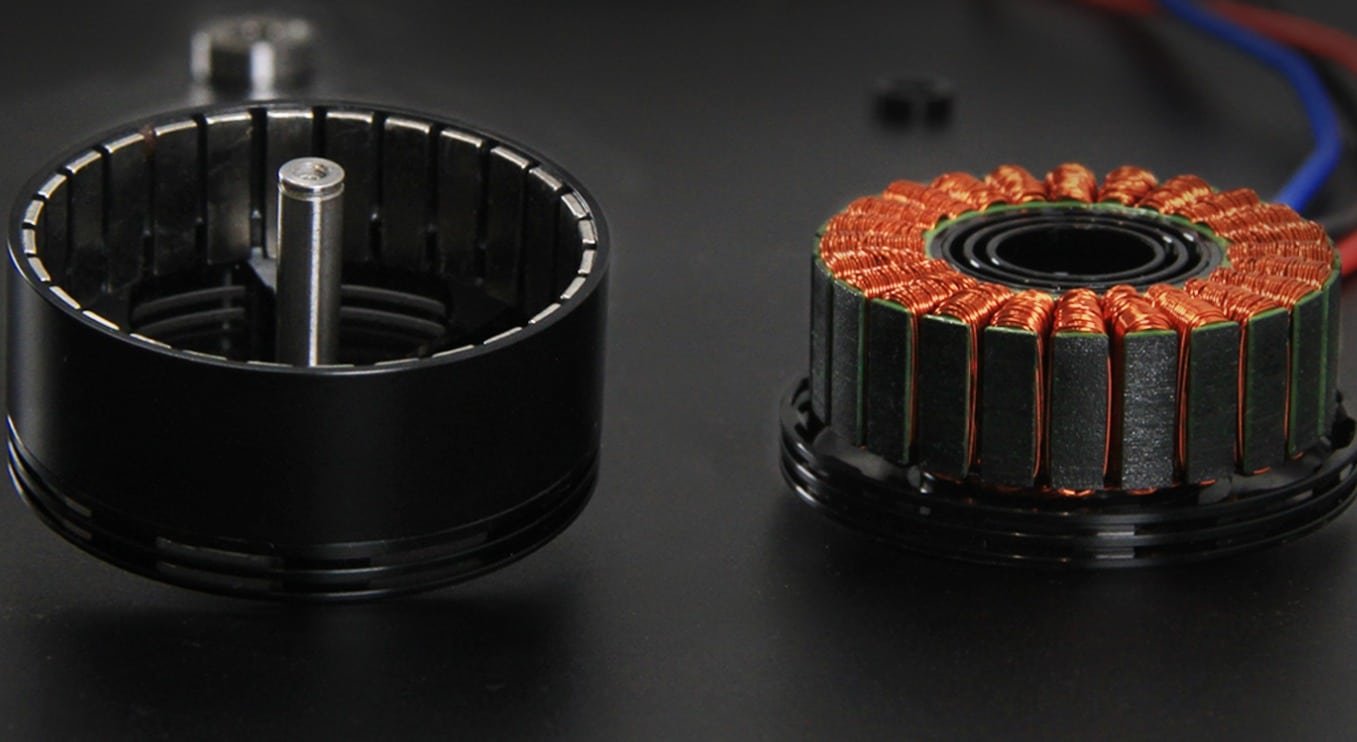The speed control of the brushless motor winding machine is a complex process. It is affected by multiple key factors. These factors interact with each other and jointly determine the efficiency and quality of the winding operation. Vacuz’s in-depth analysis of these influencing factors and strategic suggestions for reasonable speed control:

Customize 3530 24v DC BLDC børsteløs stator til Fpv UAV-dronemotor
I. Key factors of speed control
1. Mechanical configuration: The internal configuration of the winding machine is the cornerstone of its speed potential. Winding machines equipped with high-quality screws, precision guides, high-performance servo motors and advanced control systems can often provide higher speeds and smoother operating performance.
2. Wire diameter specifications: Wire diameter is an important factor affecting speed adjustment. Thick enameled wires are usually required to reduce the speed to avoid damage to the wire due to their difficult bending and winding characteristics. On the contrary, thin enameled wires can withstand higher speed challenges.
3. Stator characteristics: The geometric dimensions of the stator, such as the outer diameter, inner diameter, stack height, and the size and orientation of the slots, will affect the speed of the winding machine. For example, for stators with a large height, special winding processes or reduced speed may be required to reduce the risk of wire damage.
4. Multi-wire parallel winding considerations: When multiple strands of fine wire are wound simultaneously, due to the increased complexity of winding, it is usually necessary to appropriately slow down the speed to ensure the accuracy and quality of the winding.
5. Precision wire arrangement requirements: For motor stators that require precision wire arrangement, excessively high speeds may cause irregular wire arrangement or damage to the enameled wire, so the speed needs to be reasonably limited.
6. Mold design elements: The design and manufacturing accuracy of the mold will also affect the speed of the winding machine. A well-designed mold should ensure that the enameled wire can pass smoothly to avoid any form of scratches and damage.
2. Strategic recommendations for speed control
1. Adjust the speed based on stator characteristics: Select a suitable speed range based on a full understanding of the stator geometry. For large-sized, high-stack stators, the speed should be reduced; for stators with thin wire diameters and multiple slots, the speed can be increased.
2. Debugging and verification process: Before actually putting the winding operation into operation, it is crucial to carry out necessary machine debugging and verification. By gradually adjusting the speed and closely observing the winding quality, the appropriate speed setting point can be found.
3. Use high-quality accessories: Selecting high-quality mechanical accessories, such as screws, guide rails and servo motors, can significantly improve the stability and speed potential of the winding machine.
4. Optimize mold design: Ensure that the mold design is reasonable and the manufacturing accuracy is high to reduce the speed limitation caused by mold problems.
5. Consider the physical properties of the wire: Flexibly adjust the speed setting according to the material and wire diameter characteristics of the enameled wire. For thick enameled wire, the speed should be reduced; for thin enameled wire, the speed can be appropriately increased.

High Power Electric Bldc 2807 Stator And Rotor Compact Fpv Drone Motor 24v 1300kv Brushless Small Rc Motor For Model Aircraft
In summary, the speed control of the brushless motor winding machine is a complex process involving multiple key factors. In order to reasonably control the speed, these factors need to be fully considered and flexibly adjusted and optimized according to actual conditions.
E-mail: sales@vacuz.com





